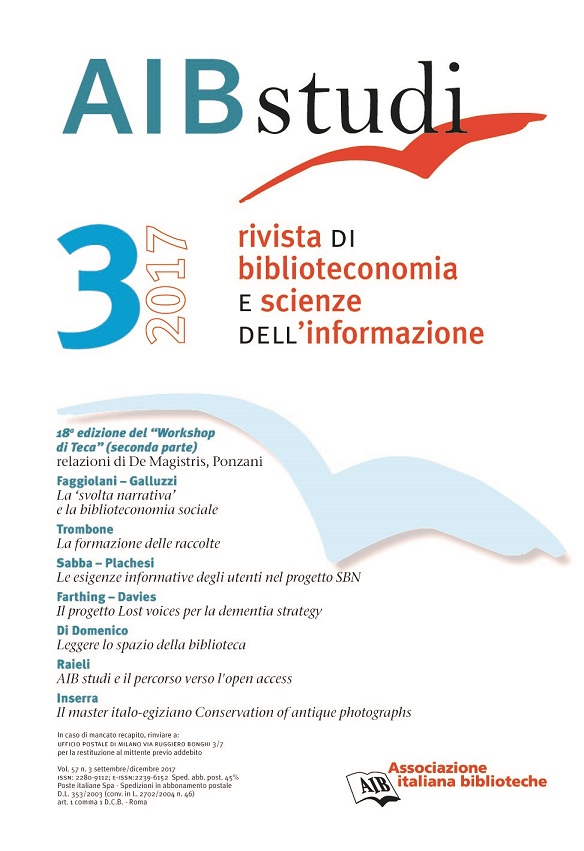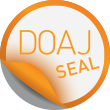Digital services librarian: what kind of recognition?
DOI:
https://doi.org/10.2426/aibstudi-11697Keywords:
digital services librarian, librarian job profile, librarian recognitionAbstract
The point of view of this speech is mainly pragmatic, focused on technical and regulatory issues, with an emphasis on the market and employment opportunities too. The main question from which it starts is the following one: in the current working, institutional, and regulatory framework, for AIB (Italian libraries association) and the whole professional category, is aiming for the recognition of a librarian ‘single’ profile more profitable than stressing the different specializations which this profile may be declined in? Among those specializations, the ‘digital librarian’ is undoubtedly one of the most important, herald of future developments.
Even before the enactment of Law 4/2013, exactly in 2011, AIB set up a specific OLAVeP working sub-group on professional profiles that drafted a wide range of specialist professional profiles as a corollary of basic librarian professional profile. This kind of approach has shown a series of critical aspects that had already appeared in the Norma UNI elaboration. Nowadays, in fact, it is absolutely not recommended to split the librarian profession into a further range of specialized ‘secondary’ profile, since this profession has yet to be ‘officially’ codified in the institutional systems.
Rather than an ‘official’ recognition of specialist professional profiles, other issues are worth considering at this point, in order to specify and defend the system and the level of knowledge, skills and competencies needed to practice the librarian profession. Therefore, the speech argues that both UNI and AIB (in its role of a recognized professional Association) are properly been opting in favour of a single declaration of the librarian, without any specialized division.
Downloads
Downloads
Published
How to Cite
Issue
Section
License
Copyright (c) 2018 AIB studi

This work is licensed under a Creative Commons Attribution-ShareAlike 4.0 International License.









